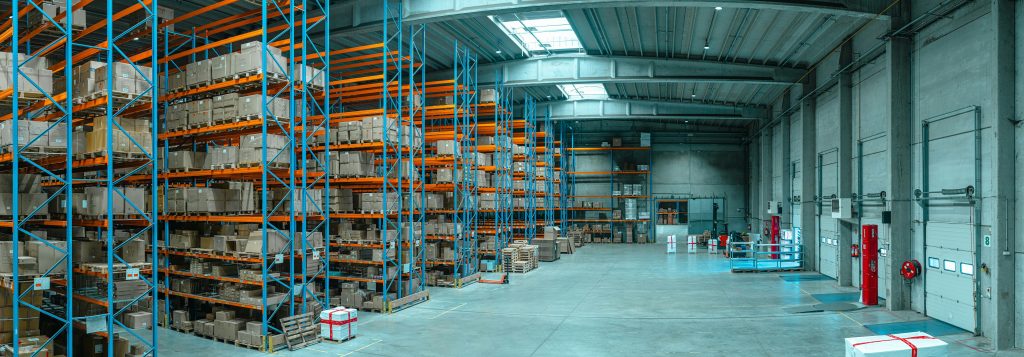- Invest in the right equipment to enhance efficiency, reduce costs, and maximize warehouse and delivery operations.
- Implement efficient inventory management practices to maintain optimal stock levels and improve order fulfillment rates.
- Utilize advanced technologies like WMS, TMS, RFID, and ERP to streamline supply chain processes and increase visibility.
- Foster strong supplier relationships and continuous process evaluation to ensure timely deliveries and ongoing system improvements.
Efficient supply chain management is essential for the success of any business in Singapore. From storing inventory to delivering products to customers, every step in the process plays a crucial role in ensuring smooth operations and customer satisfaction. This blog will discuss essential tips for optimizing supply chain flow in your Singapore-based business, from storage to delivery.
Invest in the Right Type of Equipment
One of the most crucial factors in optimizing supply chain flow is investing in the right type of equipment. This includes everything from storage shelves to delivery vehicles. Having the right equipment can improve efficiency, reduce labor costs, and minimize errors.
For example, using a reach truck in Singapore warehouses can significantly increase storage capacity compared to traditional forklifts. This helps utilize warehouse space more efficiently and reduces the need for additional storage facilities. Reach trucks are also more maneuverable, allowing for faster movement of goods and reducing the time it takes to fulfill orders.
Streamline Inventory Management
One of the key factors in optimizing supply chain flow is efficient inventory management. Make sure you have accurate data on your inventory levels at all times and implement systems that allow you to track and monitor stock levels in real time. This will help you avoid overstocking or stockouts, reduce unnecessary costs, and improve order fulfillment rates. Additionally, it will also help you identify slow-moving items, allowing you to make informed decisions on when to restock or discontinue certain products.
Implement Just-In-Time (JIT) Practices
Just-in-time practices involve receiving goods only when they are needed in the production process rather than keeping large inventories on hand. By implementing JIT practices, you can reduce excess inventory holding costs, minimize lead times, and improve overall efficiency in your supply chain. You may also want to consider working closely with your suppliers to ensure timely delivery of goods when needed.
Utilize Technology

Investing in technology can greatly enhance the efficiency of your supply chain operations. It can also ensure accurate and timely information sharing between different parties involved in the supply chain. There are many options available. Here are four examples of technologies that can streamline your supply chain:
Warehouse Management Systems (WMS)
These systems can help you optimize warehouse operations by providing real-time data on inventory levels, locations, and movement. This allows for better inventory management, efficient use of warehouse space, and improved order fulfillment.
Transportation Management Systems (TMS)
TMS can help you plan and execute shipments more efficiently by optimizing routes, modes of transportation, and carrier selection. This can lead to cost savings, faster delivery times, and increased visibility in the supply chain.
Radio Frequency Identification (RFID)
RFID technology uses tags and readers to track items in real time, providing accurate and up-to-date information on inventory levels, locations, and movement. This can improve inventory management, reduce errors, and increase supply chain visibility.
Enterprise Resource Planning (ERP) Systems
An ERP system integrates all aspects of a business into one centralized platform, including supply chain operations. This can help streamline processes, improve data accuracy, and provide real-time visibility into inventory levels and supply chain performance.
Technology is constantly evolving, and it is important to stay updated on the latest advancements that can benefit your supply chain. Some other emerging technologies to keep an eye on include Artificial Intelligence (AI), the Internet of Things (IoT), and Blockchain.
Focus on Supplier Relationships

Building strong relationships with your suppliers is essential for optimizing supply chain flow. Communicate regularly with suppliers to ensure timely deliveries and address any issues that may arise. Consider implementing vendor-managed inventory (VMI) programs to streamline ordering processes and improve inventory turnover rates.
Continuous Improvement
The key to optimizing supply chain flow is continuous improvement. Regularly review your processes and performance metrics to identify areas for improvement and implement changes accordingly. Encourage feedback from employees, customers, and suppliers to gain valuable insights into potential bottlenecks or inefficiencies in your supply chain.
Mastering efficient supply chain management in Singapore hinges on strategic equipment investment, meticulous inventory control, judicious use of JIT practices, and leveraging cutting-edge technologies. Building robust supplier partnerships and embracing continuous improvement is crucial for optimizing operations and enhancing customer satisfaction. By adhering to these strategies, Singapore-based businesses can achieve streamlined supply chain flows, reduce costs, and remain competitive in the dynamic market landscape.
